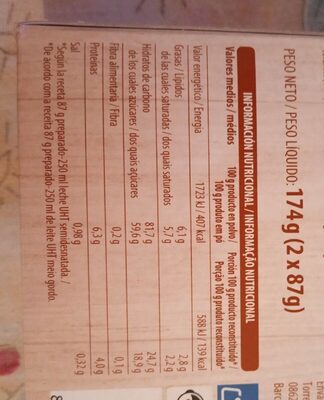Crema pastelera - Hacendado - 2 x 87 g
Aquesta pàgina del producte no està completa. Podeu ajudar a completar-la editant-la i afegint-hi més dades a partir de les fotos ja disponibles, o fent-ne més amb l'aplicació de androide o iPhone / iPad. Gràcies!
×
Codi de barres: 8480000156006 (EAN / EAN-13)
Quantitat: 2 x 87 g
Marques: Hacendado
Botigues: Hacendado
Països on es va vendre: Espanya
Matching with your preferences
Entorn
Empaquetament
Transport
Report a problem
Fonts de dades
Producte afegit per kiliweb
Última modificació de la pàgina del producte per roboto-app.
La pàgina del producte, també editada per charlesnepote, ecoscore-impact-estimator, elcoco, vegan-app-chakib, vegetarian-app-chakib, yuka.sY2b0xO6T85zoF3NwEKvlm5nWYaApAn8FCbQpGqgn8mPIpn0cOlOxKGqbKo.
Si les dades són incorrectes o incompletes, pot completar o corregir editant aquesta pàgina.








